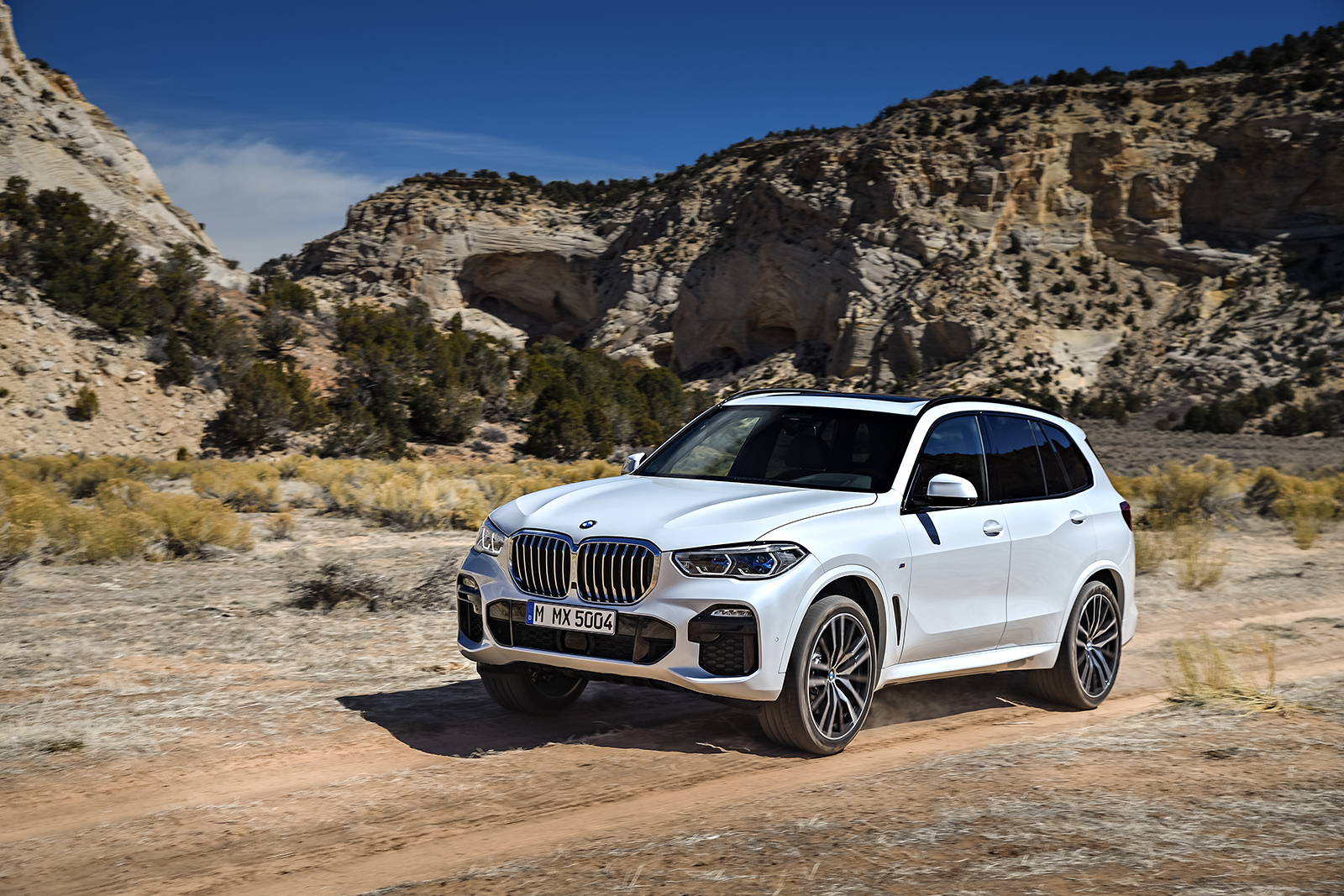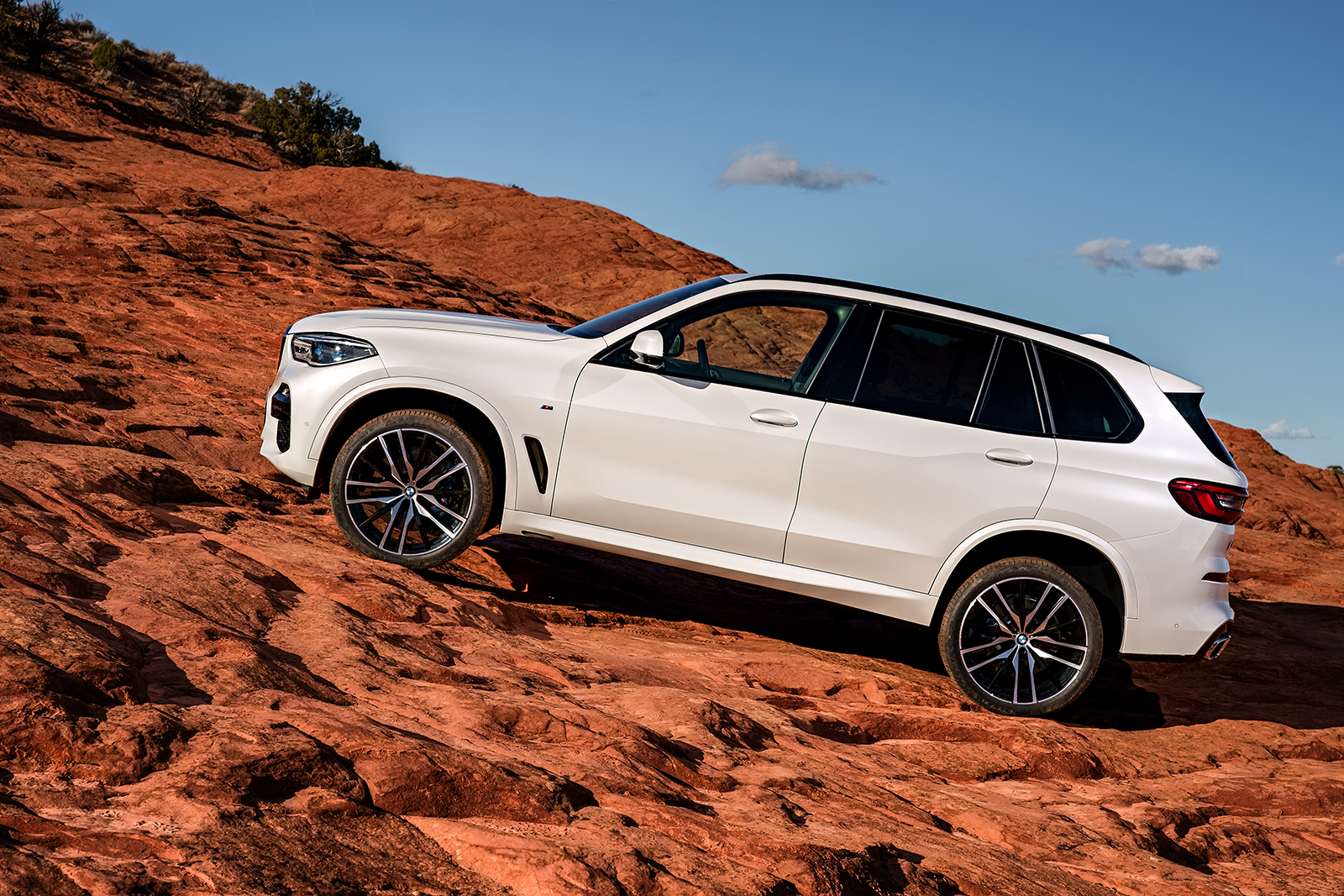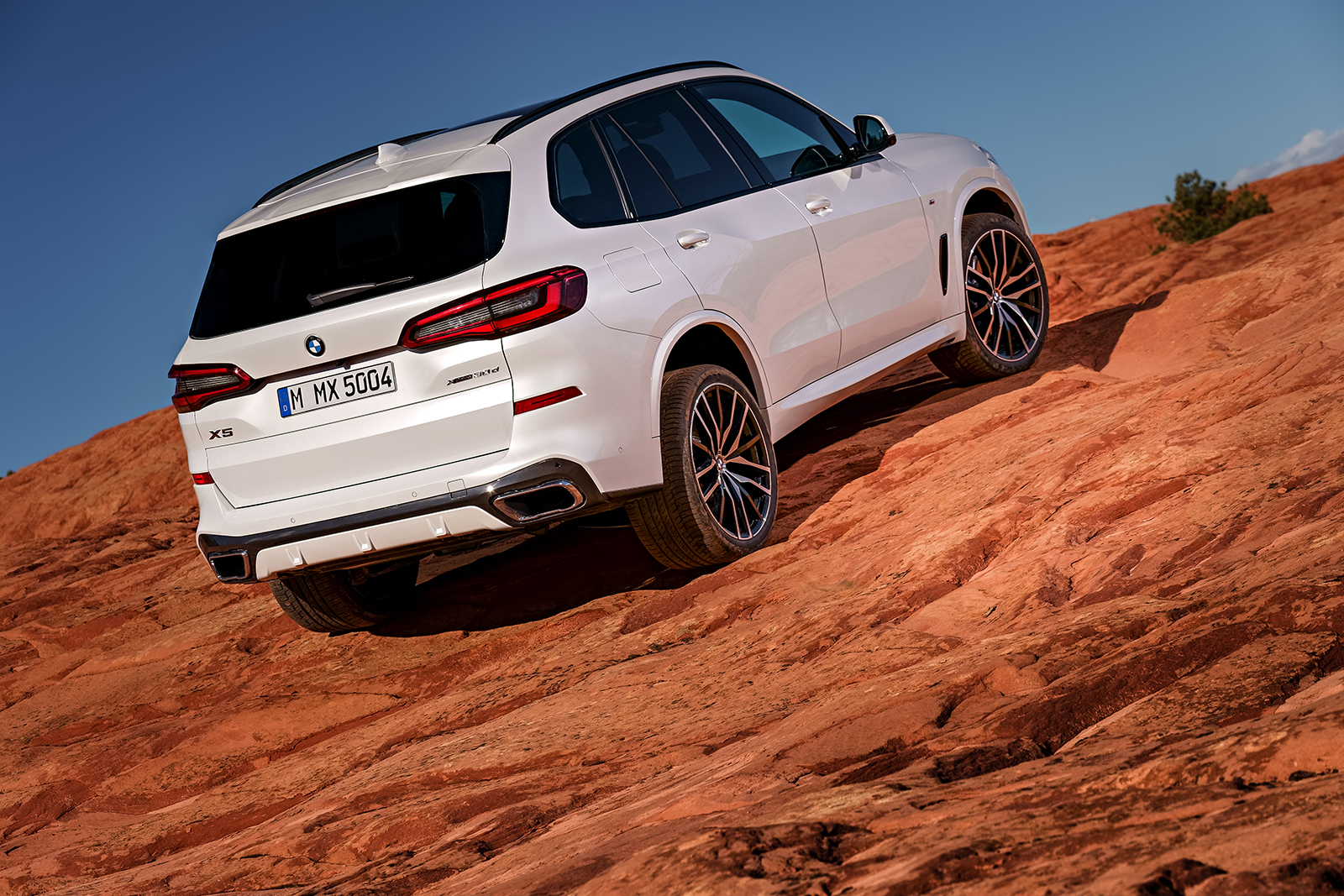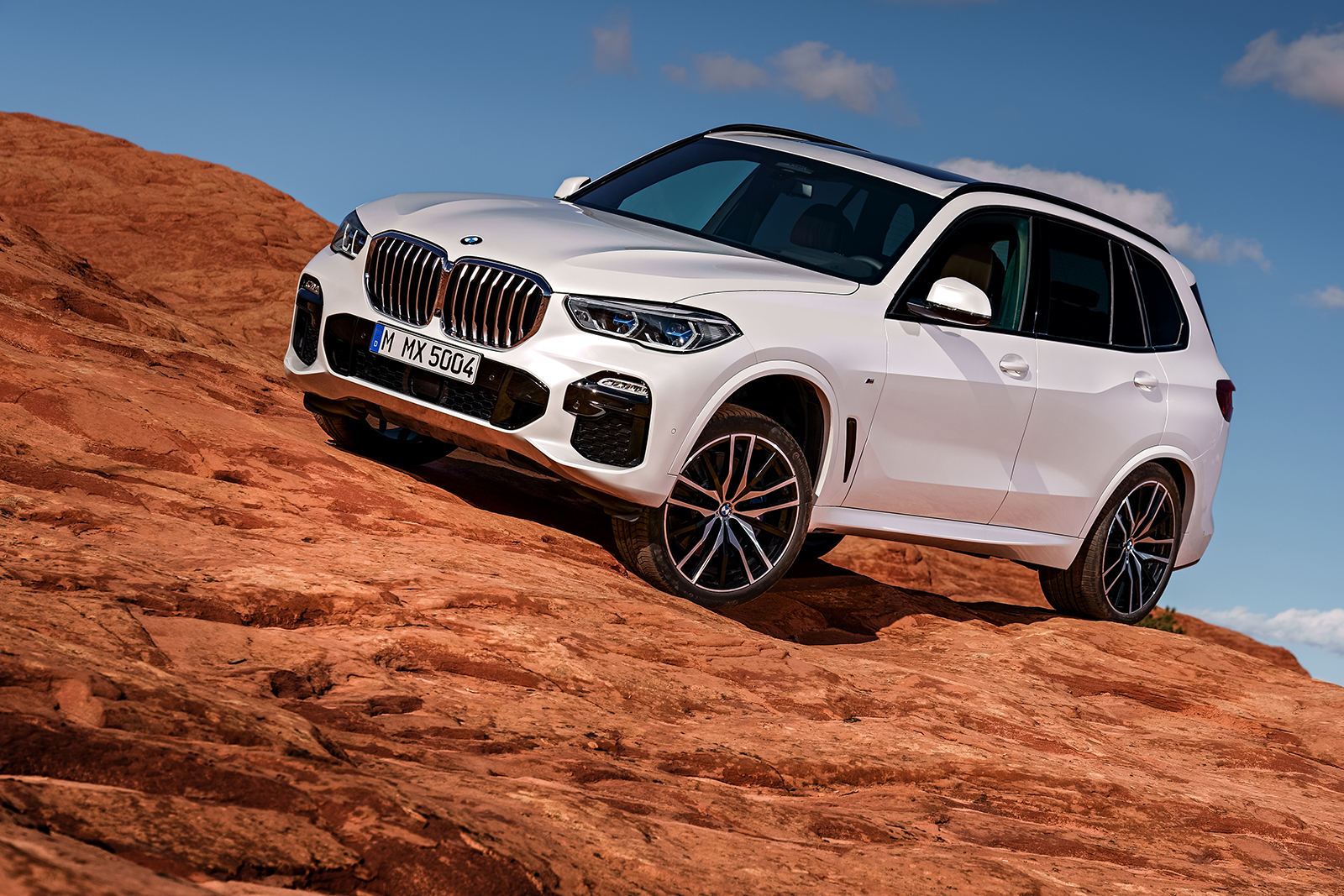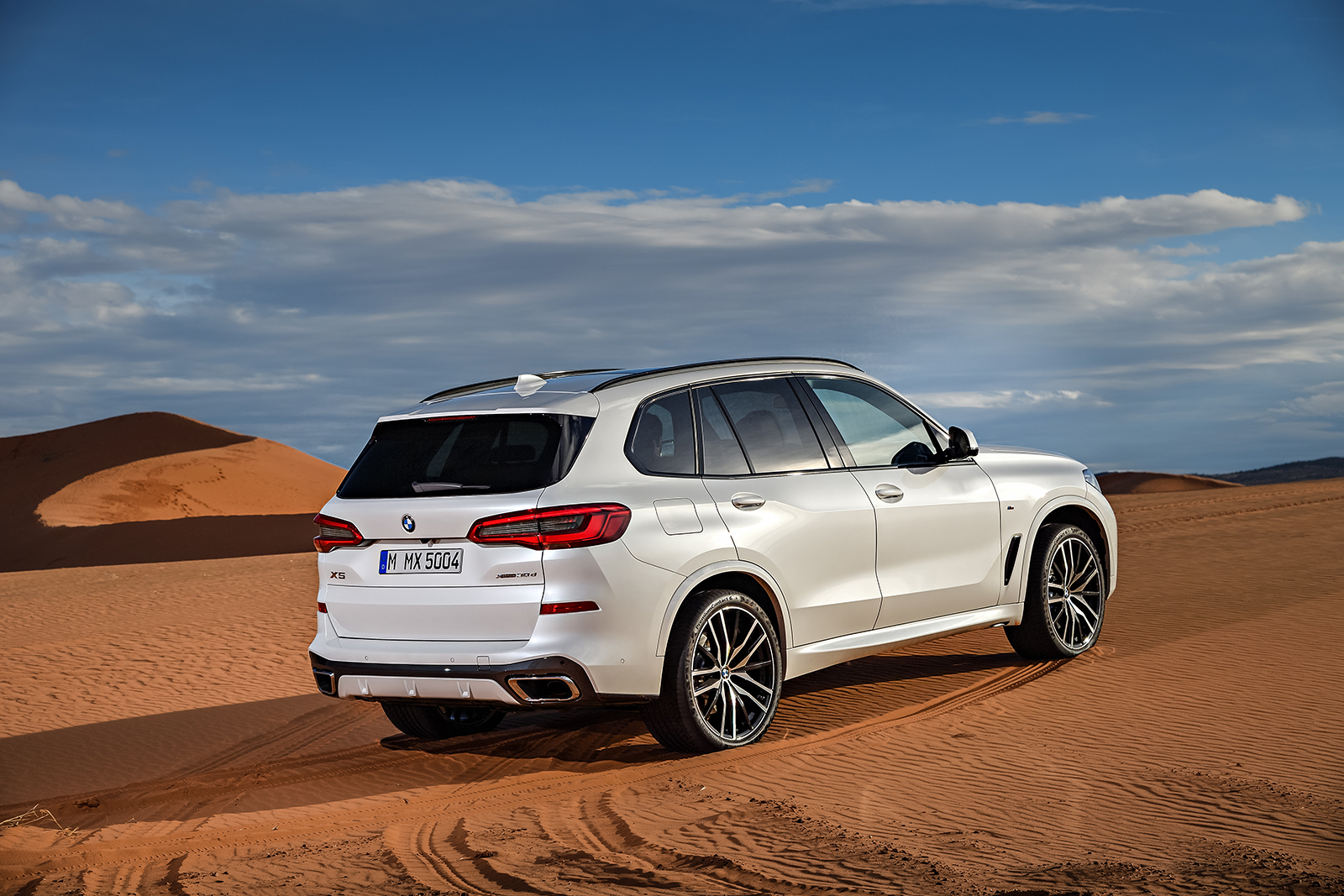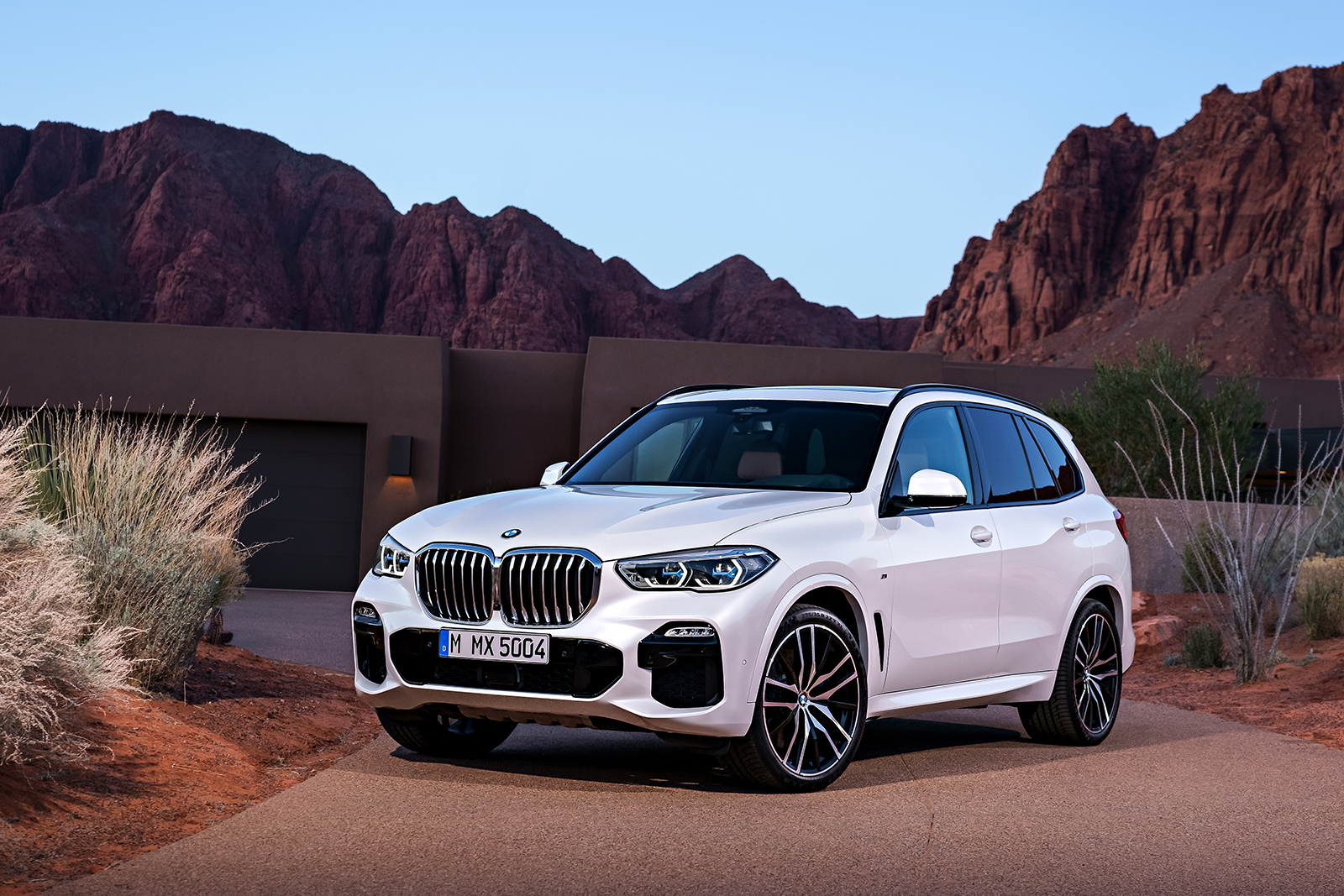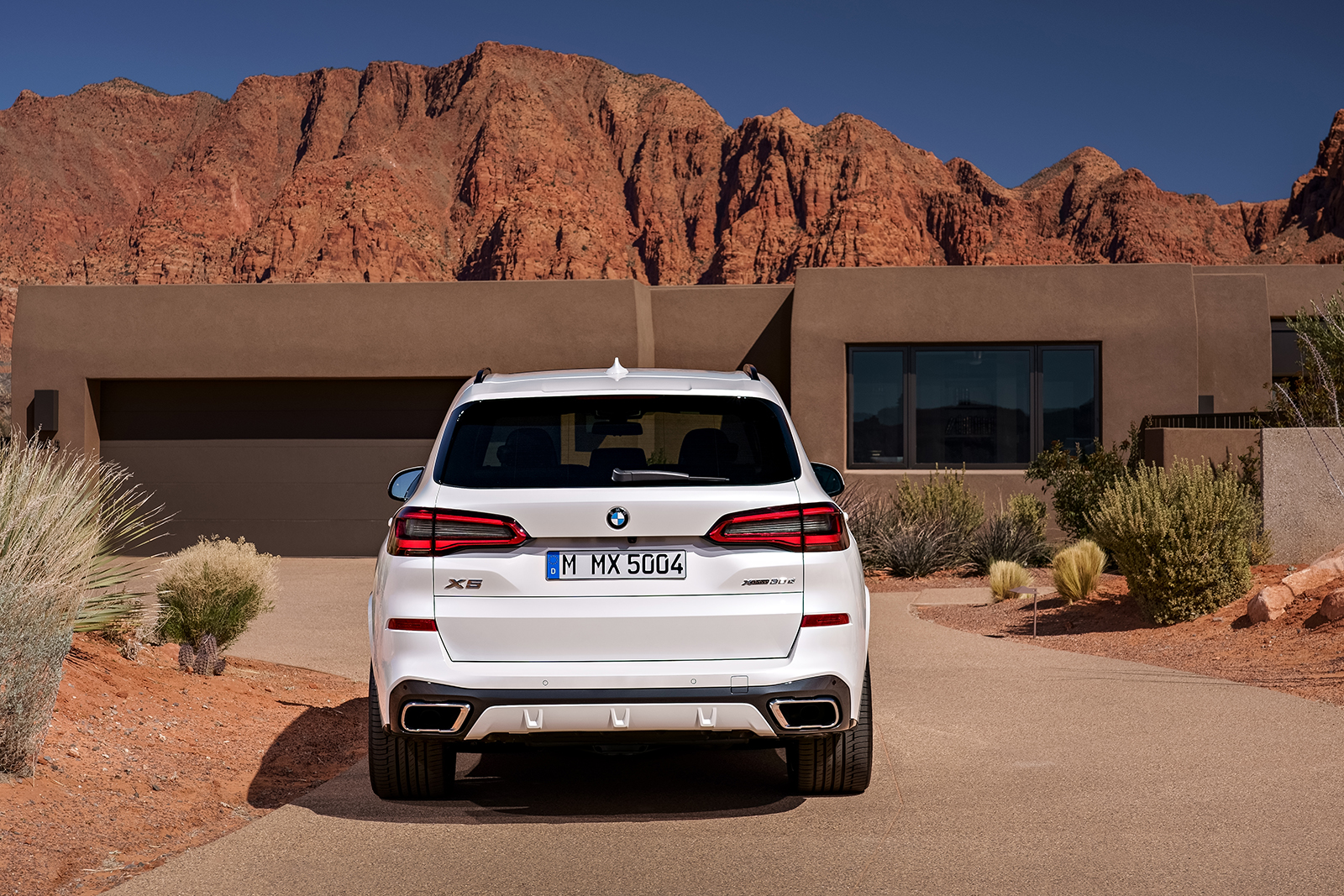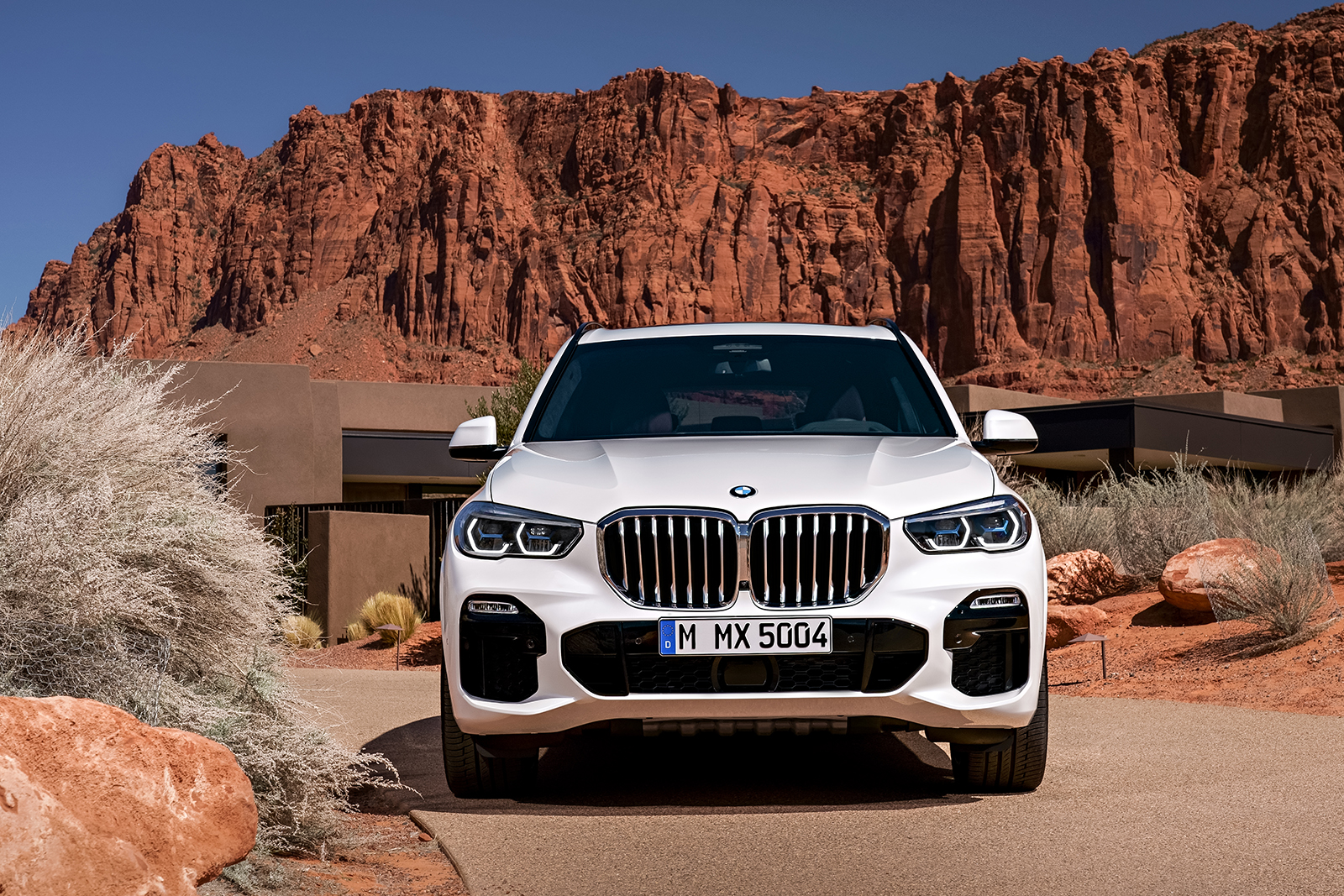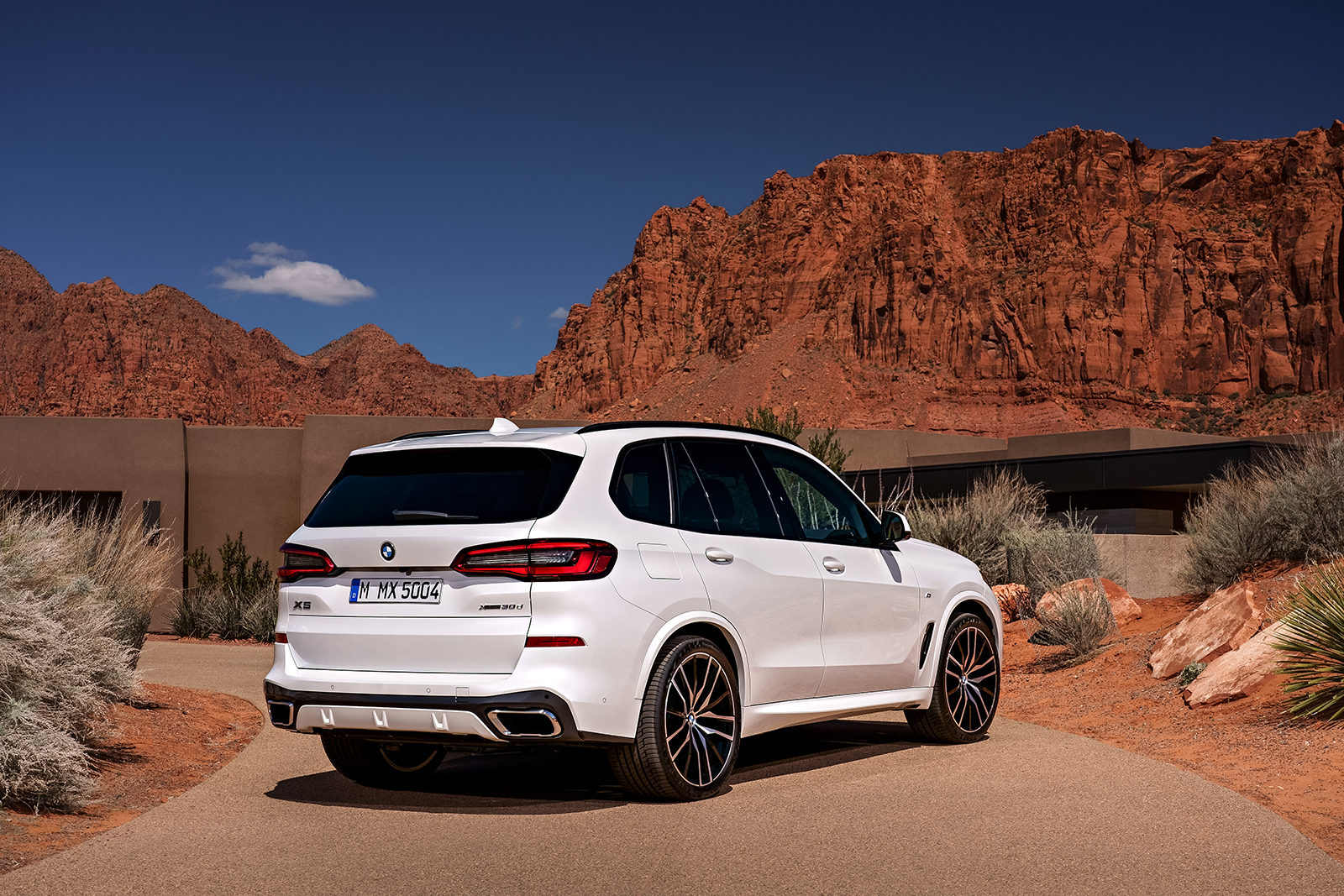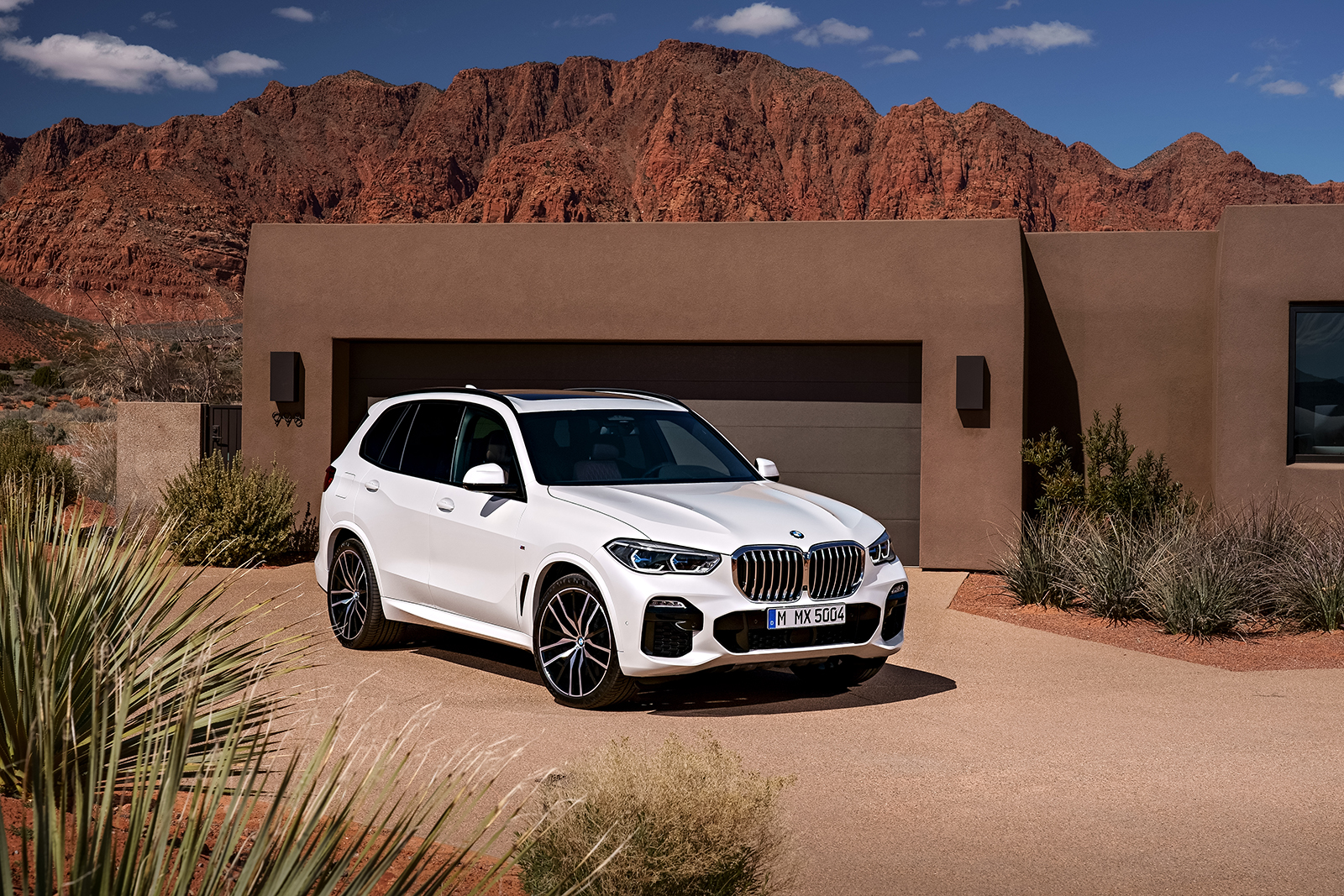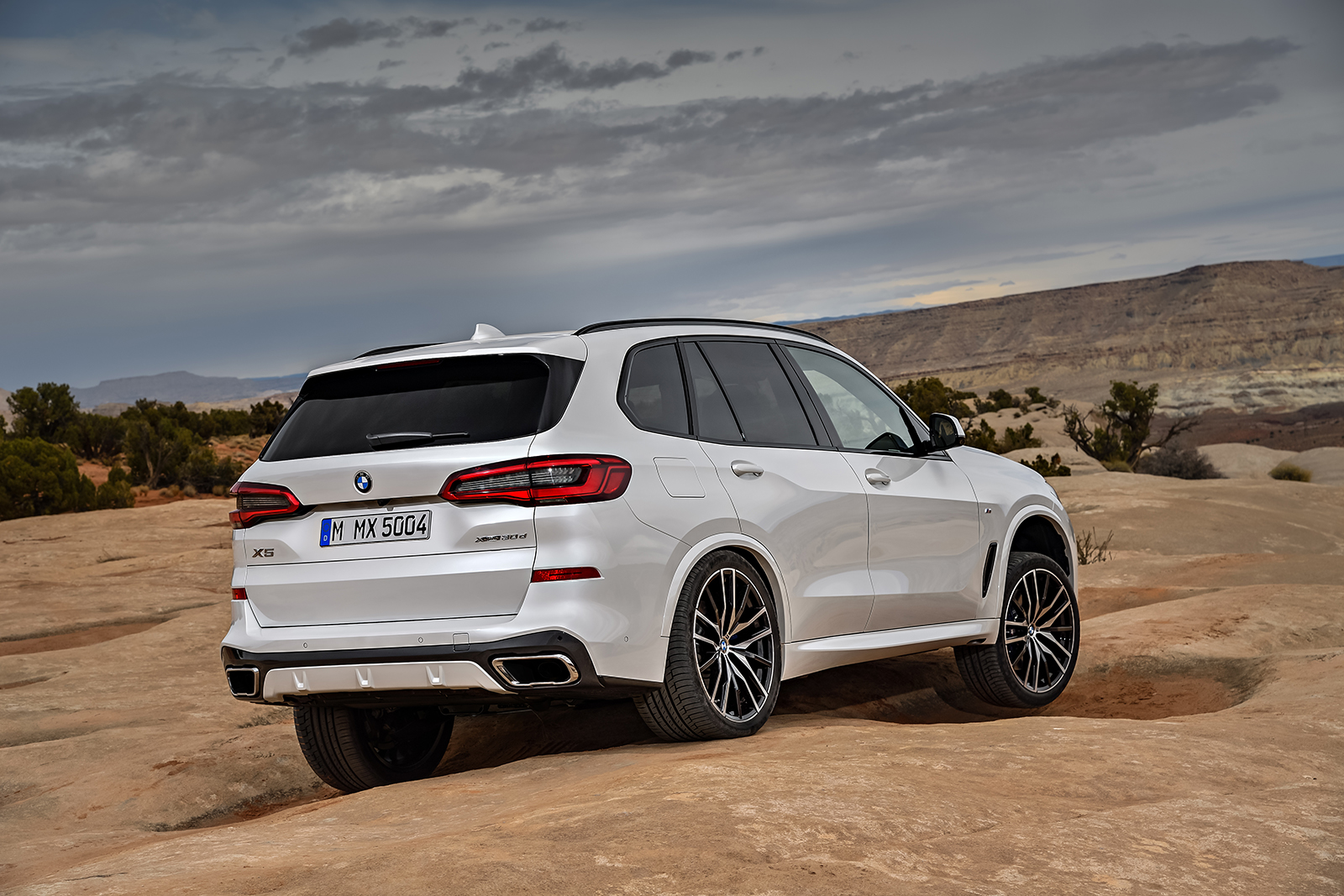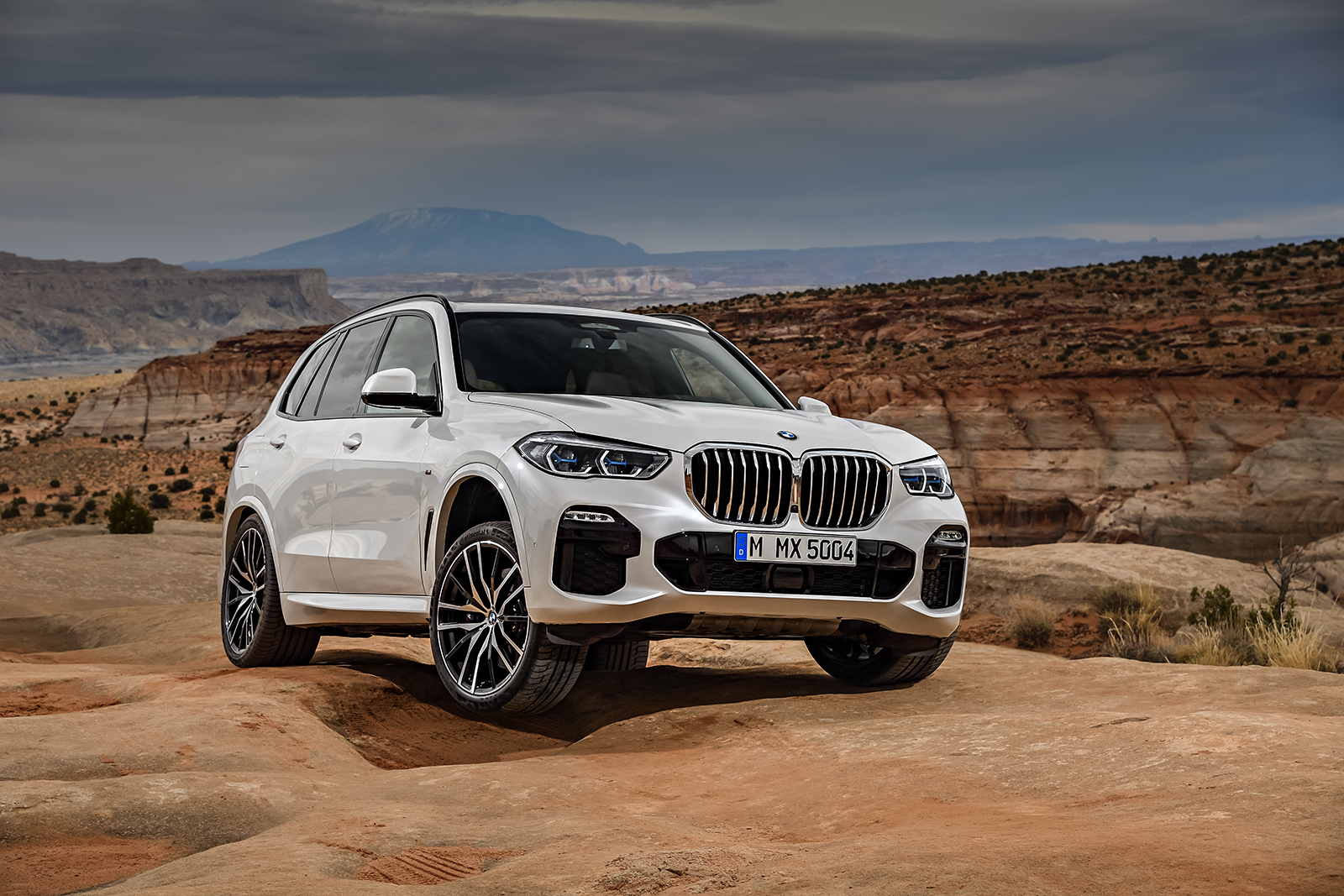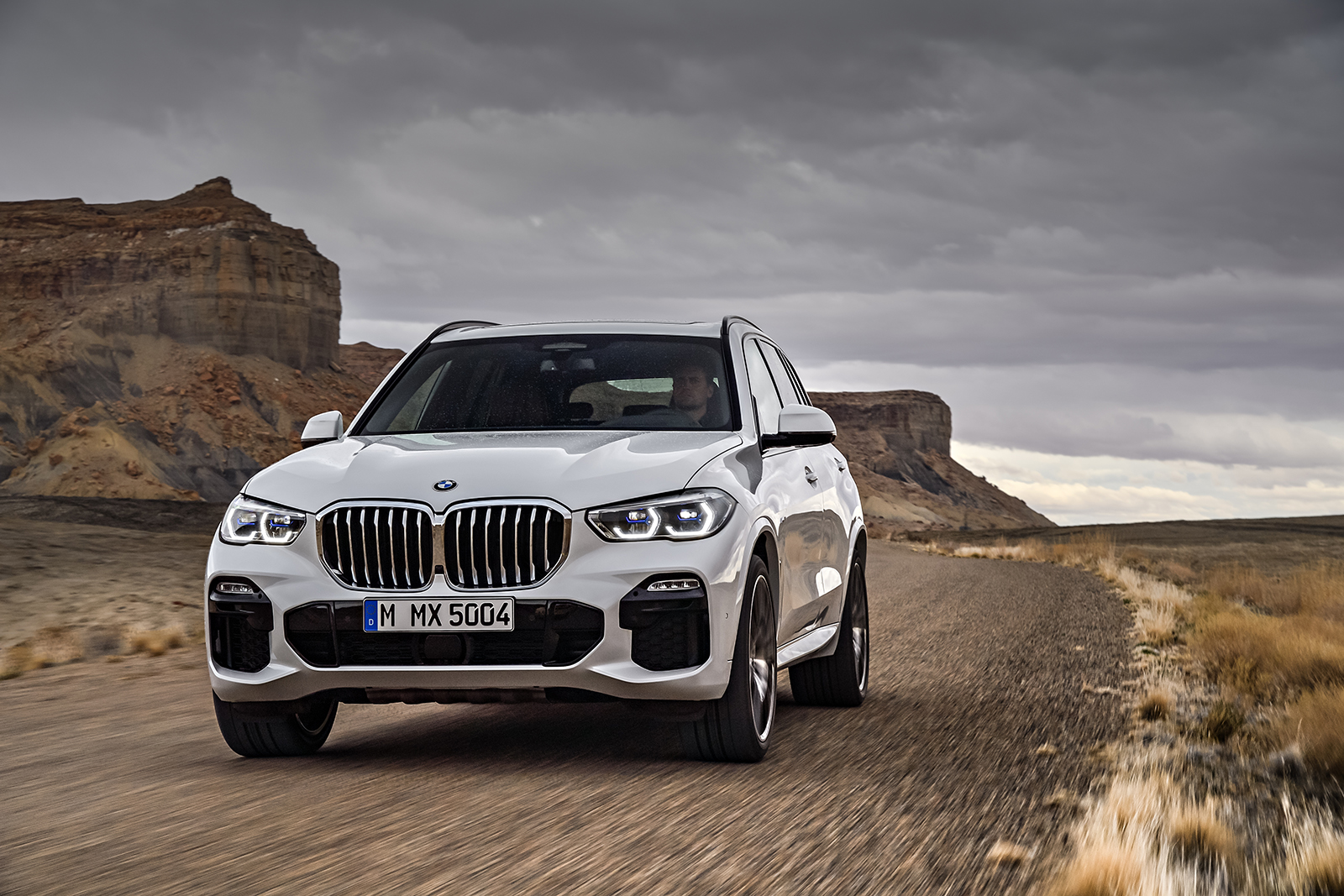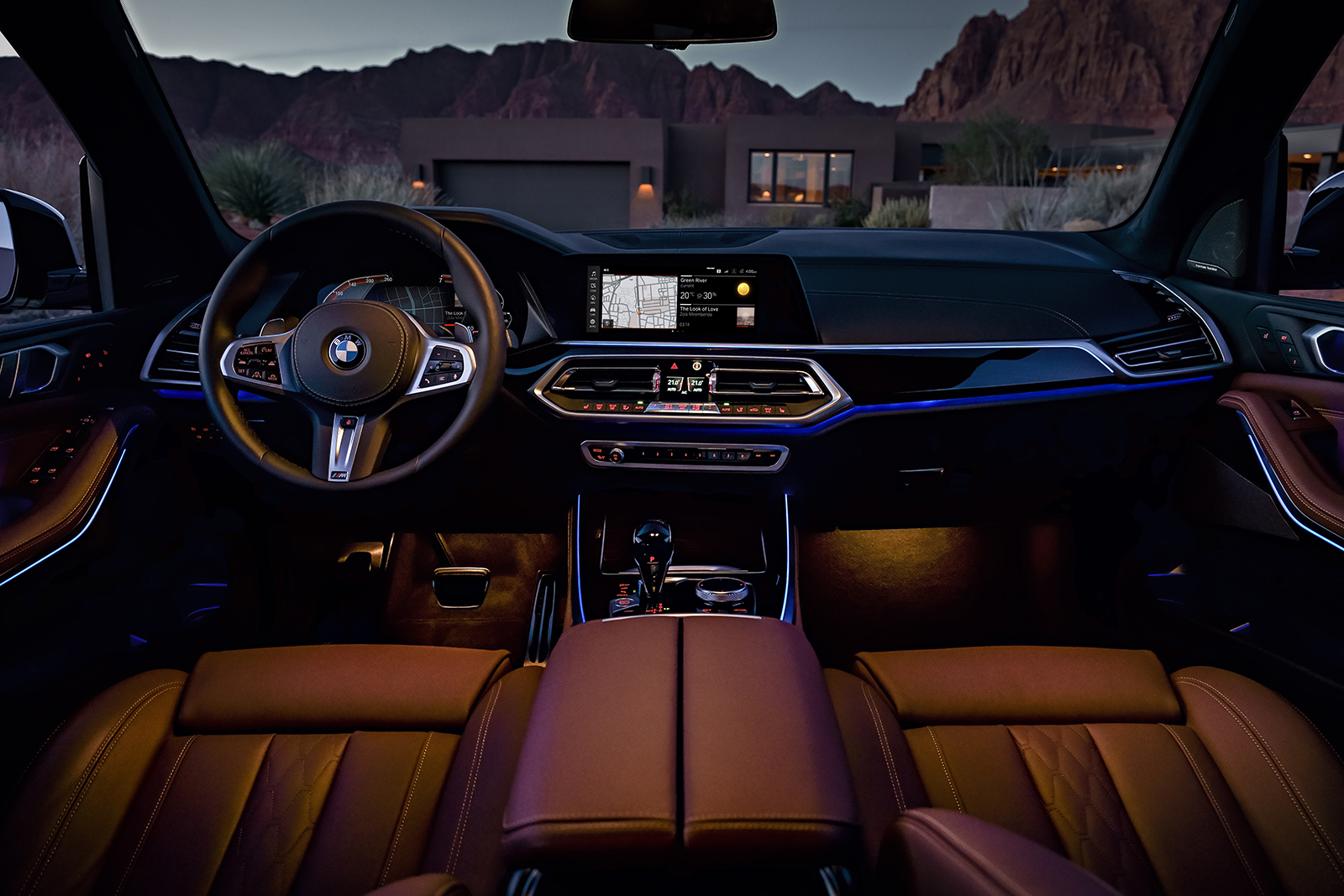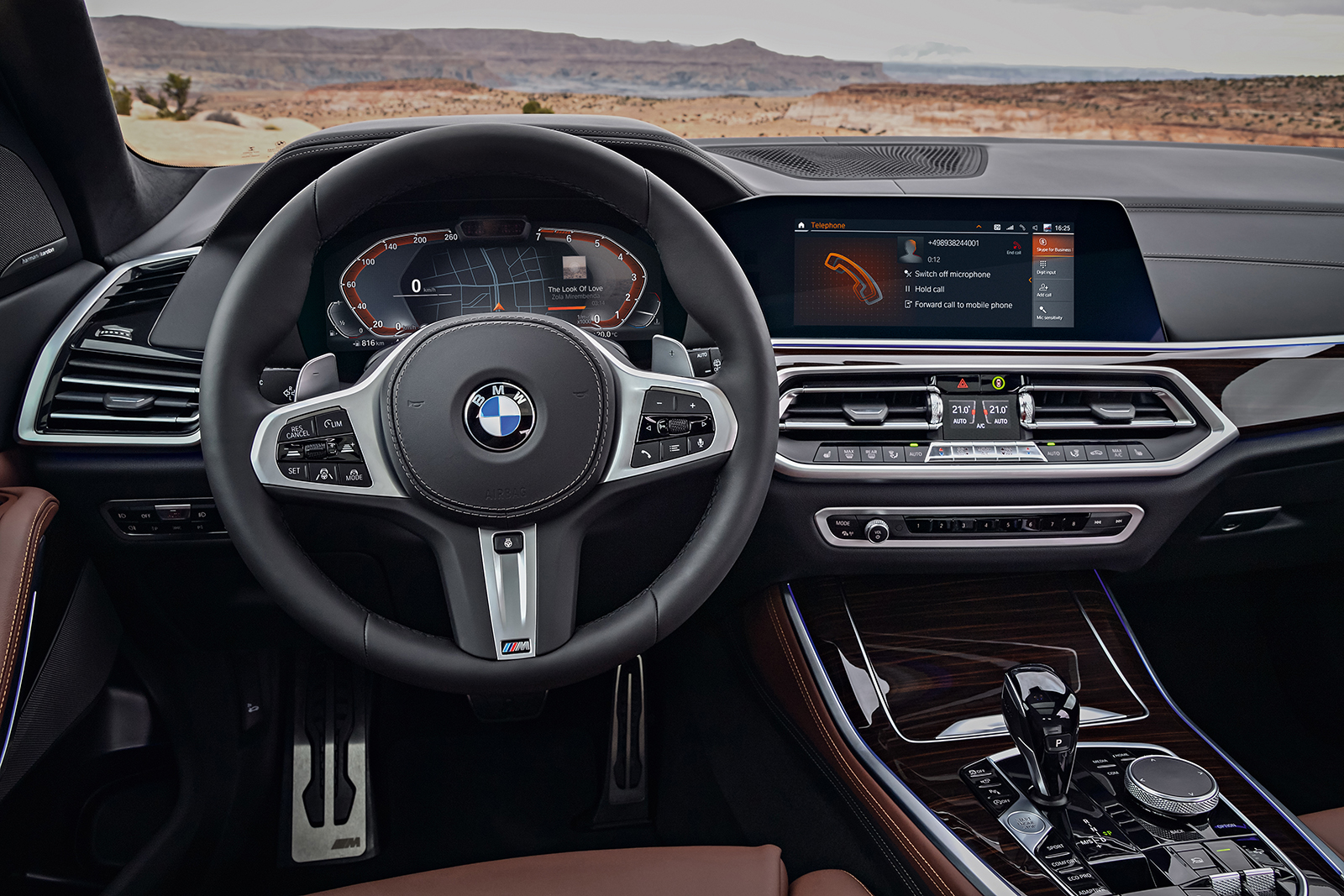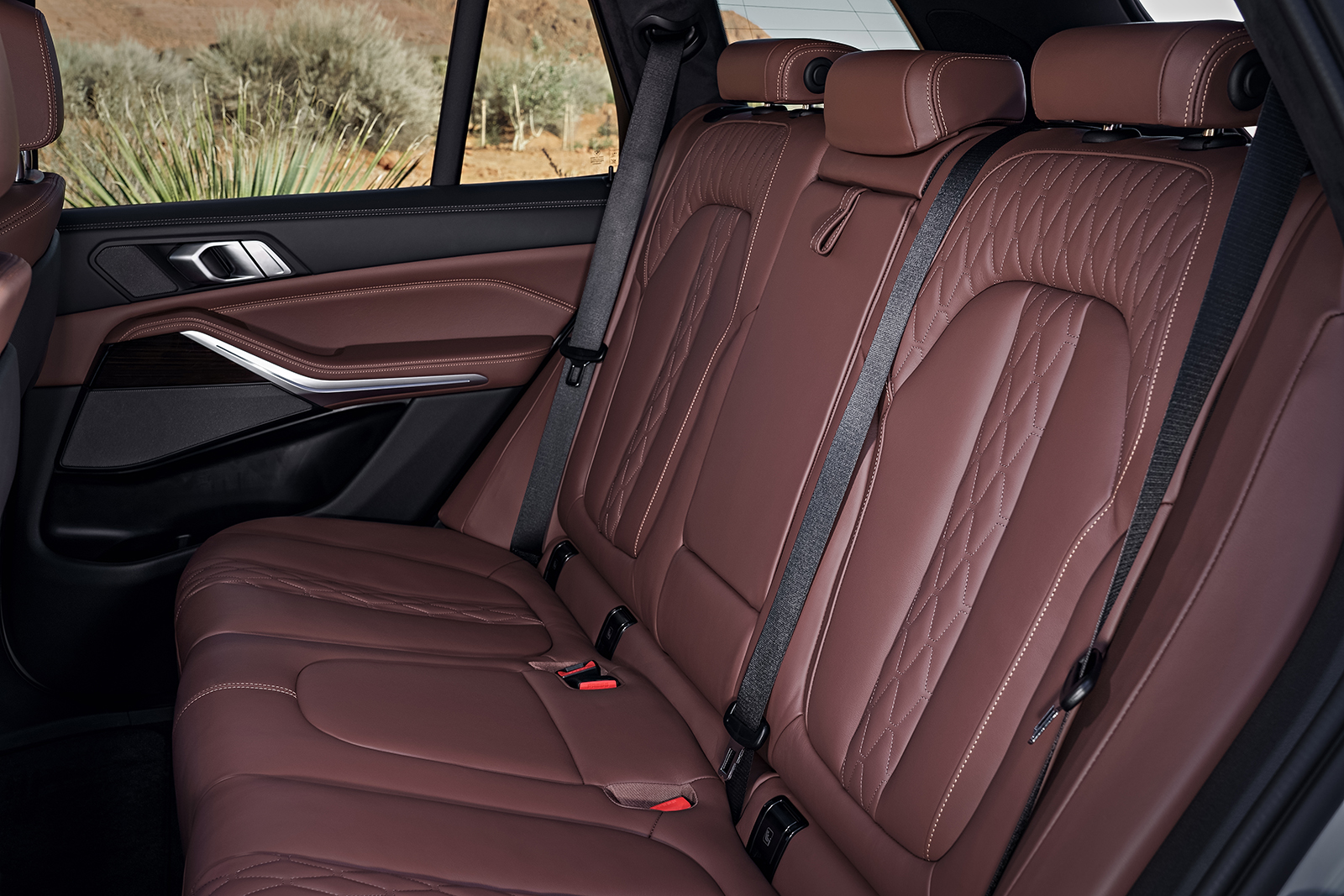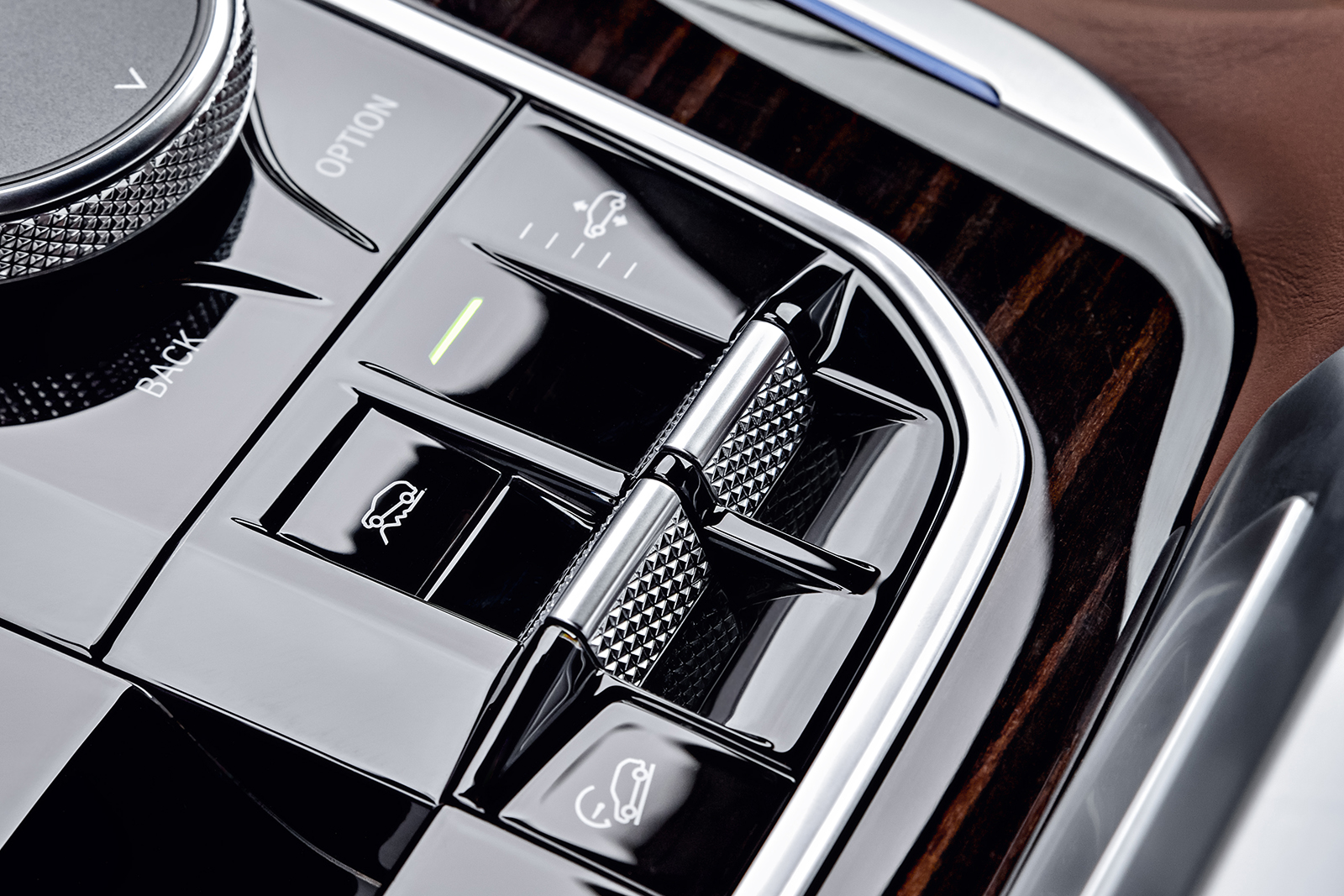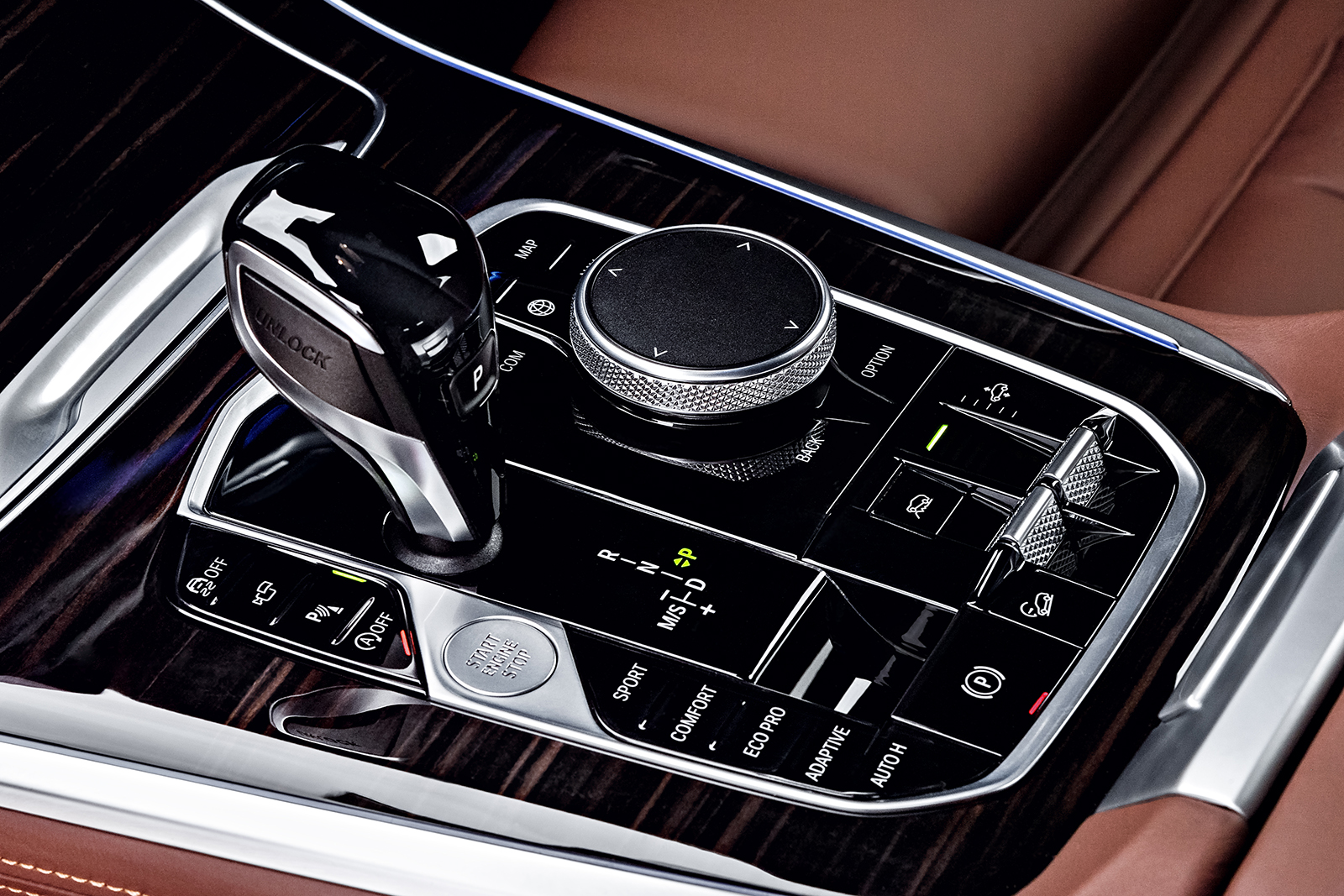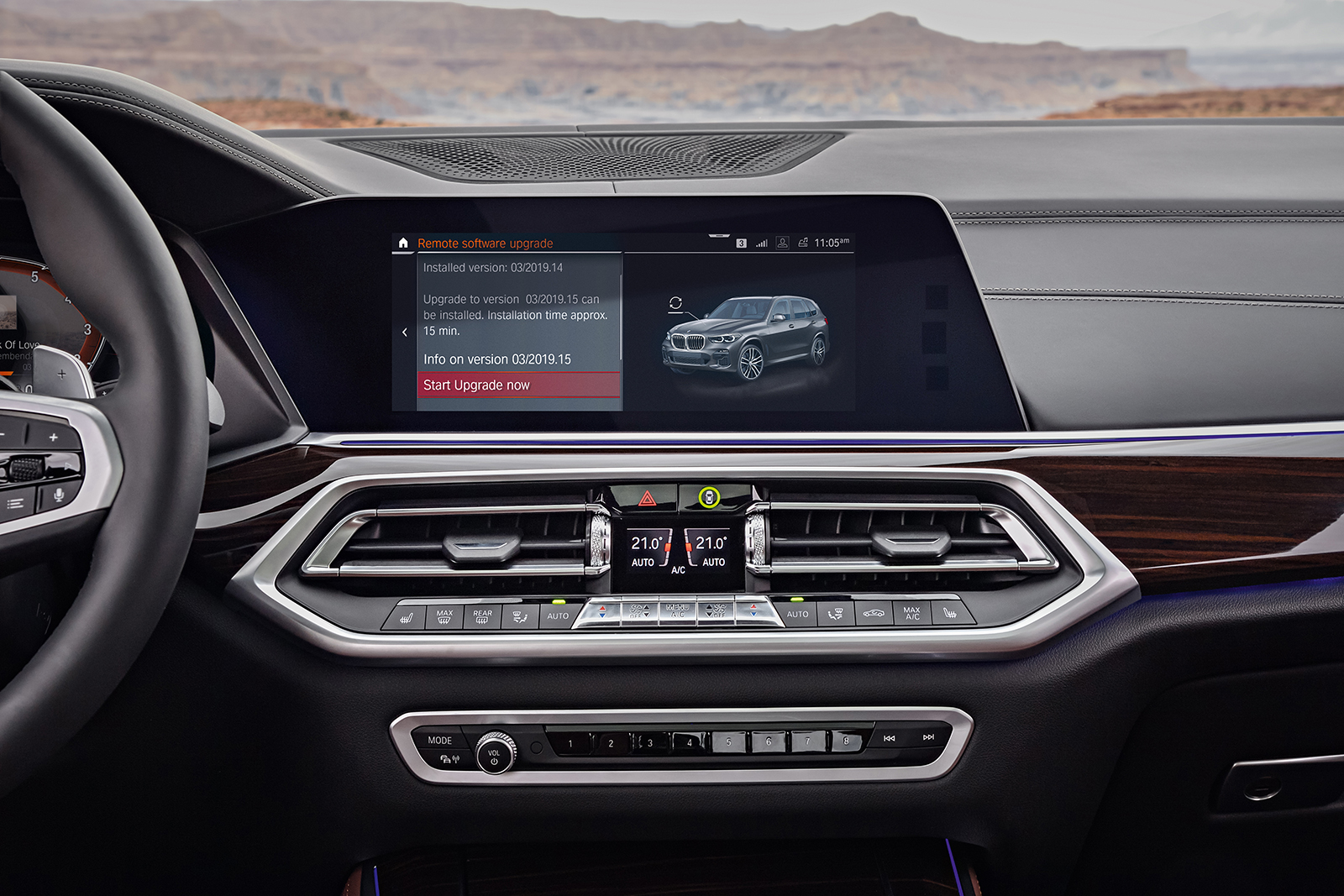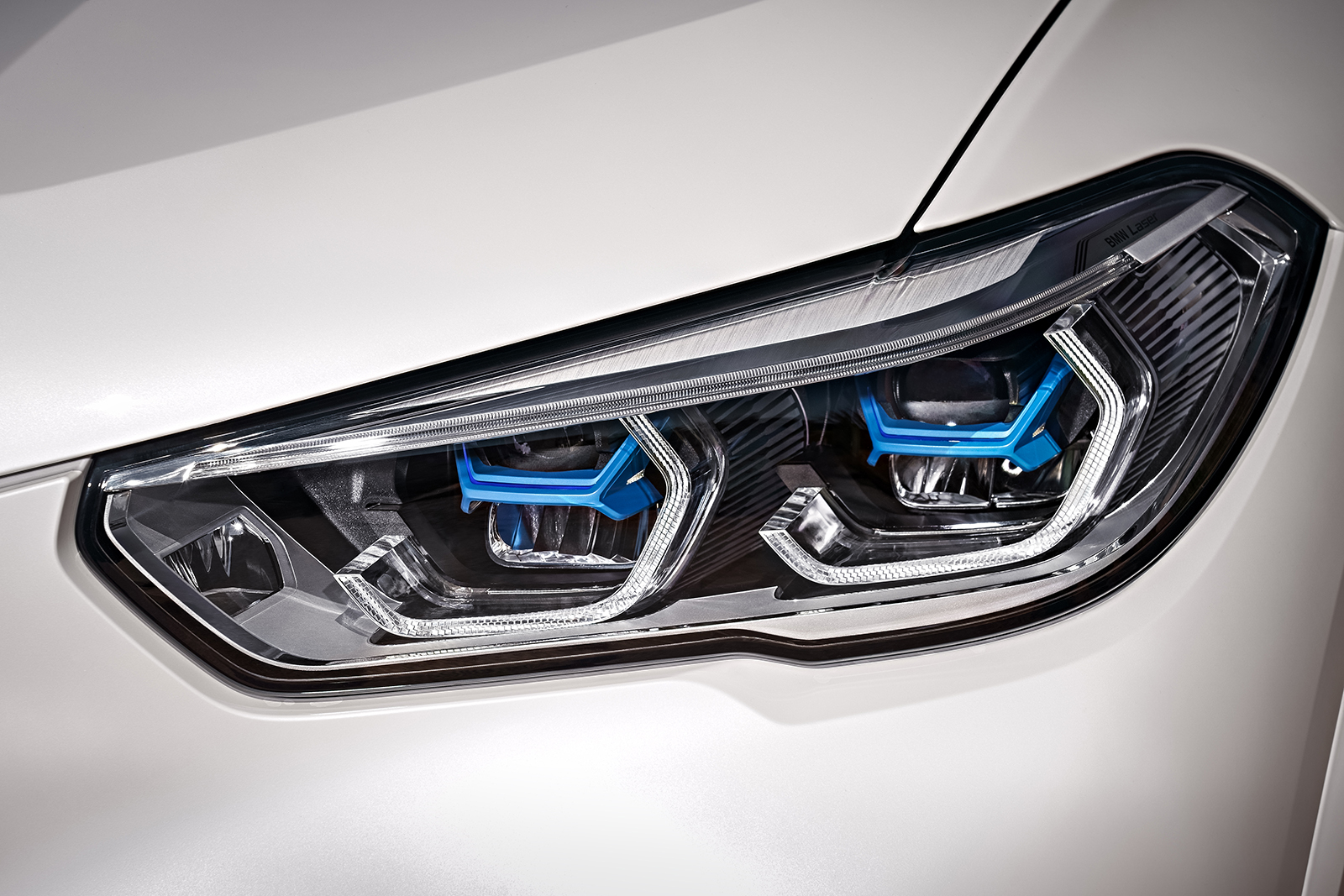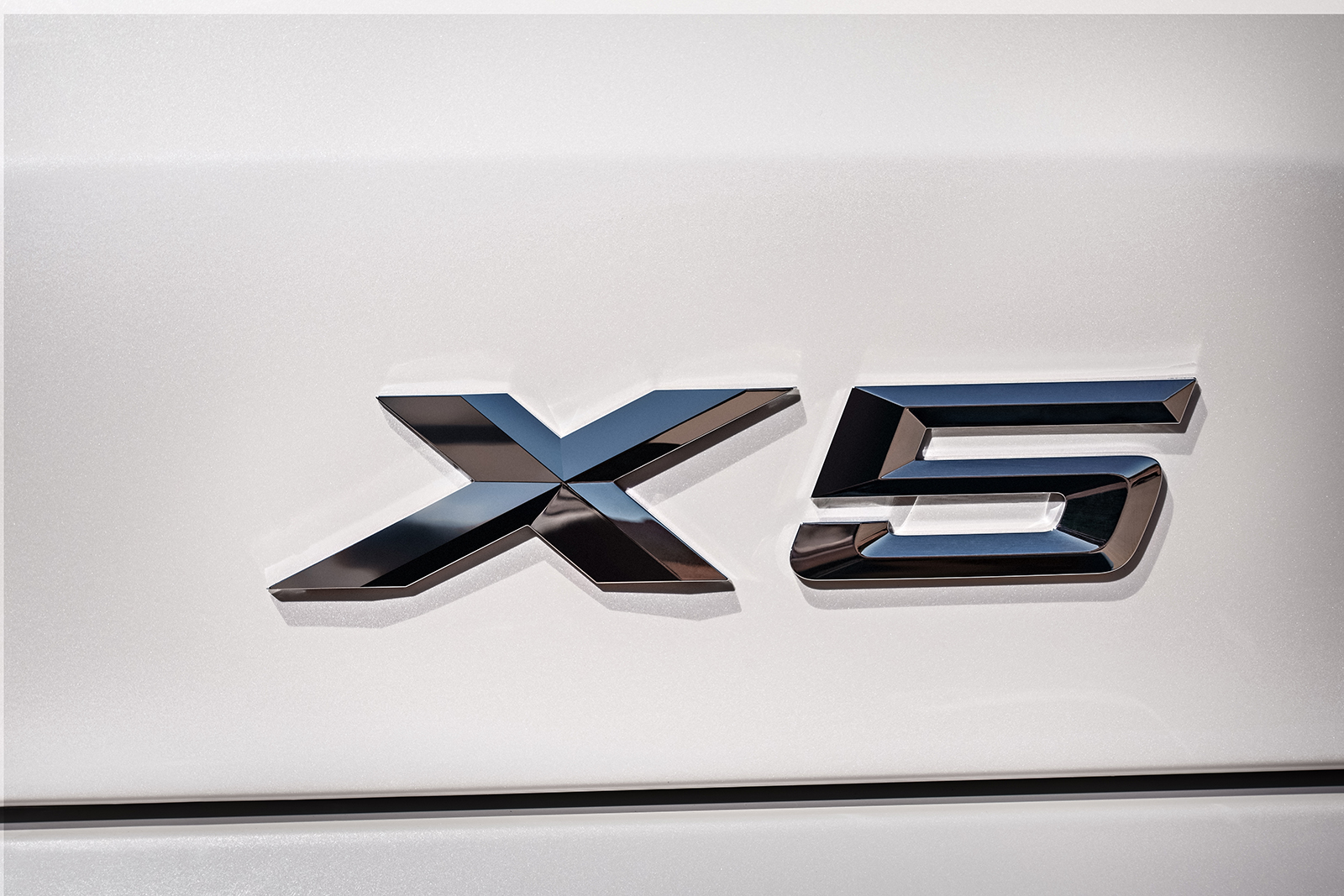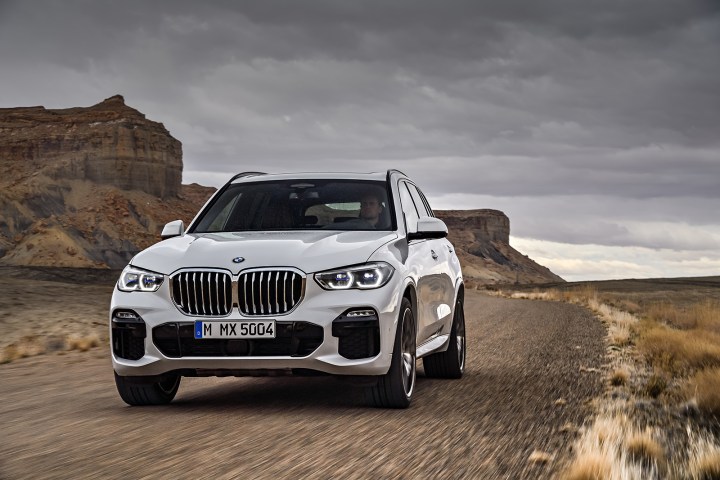
While arch rivals, Audi, revealed its new Q8 flagship crossover SUV, BMW decided to one-up its competition by pulling off the wraps off its redesigned X5 midsize crossover SUV. The 2019 BMW X5 enters its fourth generation, all to the amusement of suburbanites looking to replace their current and aging luxury family vehicle. At launch in November of this year, the new X5 will be available in xDrive 40i with the usual TwinPower turbocharged gasoline inline-six starting at $60,700, and xDrive 50i form with BMW’s familiar TwinPower turbocharged gasoline V8 for $15,000 more, at $75,750, both not including the $995 “Destination and Handling” Fee.
Since its introduction in 1999, the X5 has become one of the company’s most successful selling models, selling more than 2.2 million examples to date worldwide.
What’s new
Besides the complete redesign, which takes a more conservative “don’t fix what ain’t broke” approach to avoid alienating its current and strong customer base, the new fourth-generation X5 actually grows in size. Its wheelbase is larger by 1.6 inches, while the overall length of the X5 increases by 1.1 inches. Width also gets a boost by 2.6 inches while overall height jumps by an inch. BMW says the new design offers the 2019 BMW X5 a more “muscular appearance,” but to us, it just looks exactly the same as the old one, except slightly bigger and sleeker.
The obvious result from the increase in size is a considerable bump in space for the interior, meaning more space for people and their things.
“The BMW X5 embodies the origins of the BMW X family and, in its fourth generation, sends out its most powerful message yet in terms of presence and modernity,” Adrian van Hooydonk, senior vice president of BMW Group Design, said in a statement. “It defines a new X design language — robust, clear and precise.”
New optional “off-road package”
The new 2019 BMW X5 boasts a whole range of new technologies. For instance, there is a new optional “off-road package.” When equipped, it adds an upgraded air suspension setup at both axles and a new rear locking differential, for those who feel like tearing up some paths less traveled.
The package also equips bespoke underbody protection in the form of skid plates to avoid damaging the car when crawling over hard obstacles. It also adds special programming modes to the electronic driver aids, allowing certain settings for the suspension, traction and stability control, xDrive all-wheel-drive system, transmission control, and throttle response, not otherwise available in X5s without the off-road package.
Introduction of “BMW Live Cockpit Professional”
Also debuting for the first time is BMW’s new “Live Cockpit Professional,” incorporating two very large, high-definition 12.3-inch diagonally measured LCD screens, replacing the traditional analog gauge instrument cluster and the previous model’s iDrive 5.0 center screen. Dubbed as the next-generation and seventh rendition of BMW’s love-it-or-hate-it infotainment and central control setup, the “Live Cockpit Professional” setup allows drivers to access everything from the sat-nav to BMW Connected services, and other fancy in-car functions. For computing, the system utilizes a hard drive-based multimedium system with an additional 20 GB of storage memory for music and other personalized settings, all accessible via two USB ports and Bluetooth connectivity. And for the first time, all of BMW’s Connected Services will be bundled in a single “Connected Package Professional,” incorporating remote services, concierge services, on-street parking information, and real-time traffic information — all of which are standard on the new X5.
Familiar power- and drivetrains
Under the hood of the all-new fourth-generation 2019 BMW X5 is the usual and familiar TwinPower turbocharged 3.0-liter gasoline inline-six, good for 335 horsepower and 330 pound-feet of torque. For those not wanting to give up any serious performance can opt for the significantly more powerful TwinPower turbocharged 4.4-liter V8.
Although BMW has always offered an eight-cylinder option for the X5, this latest V8 is significantly revised with various upgrades. The 4.4-liter displacement remains the same as the outgoing eight, but engineers relocated the turbochargers to the valley of the V8, rather than mounting them outboard, for better performance, efficiency, and packaging. New heat plates are added to aid thermal shielding in the crankcase and cylinder head, and the ignition system is new from the ground up, improving the engine’s Auto Start-Stop function.
The result is 456 horsepower, up from 444 for the outgoing V8-powered X5, while torque remains the same at around 480 pound-feet.
Both engines still get the same eight-speed ZF-sourced automatic that we have come accustomed to over the past few years. BMW says the V8 can sprint to 60 in just 4.6 seconds while the six-cylinder version isn’t much of a slouch either, taking only 5.3 seconds.
Pricing will be available closer to the X5’s sales launch time in November.
Updated on July 5: Added the official starting price of the 2019 BMW X5.
Editors' Recommendations
- Oppo Find X5 Pro gets flagship Snapdragon 8 Gen 1 processor
- 2022 BMW iX first drive: Shifting paradigms
- BMW’s technology flagship is an electric SUV with concept car-like styling
- BMW M bundles supercar-like performance into the X5 and the X6
- BMW teases hydrogen cars again with fuel cell X5 concept
